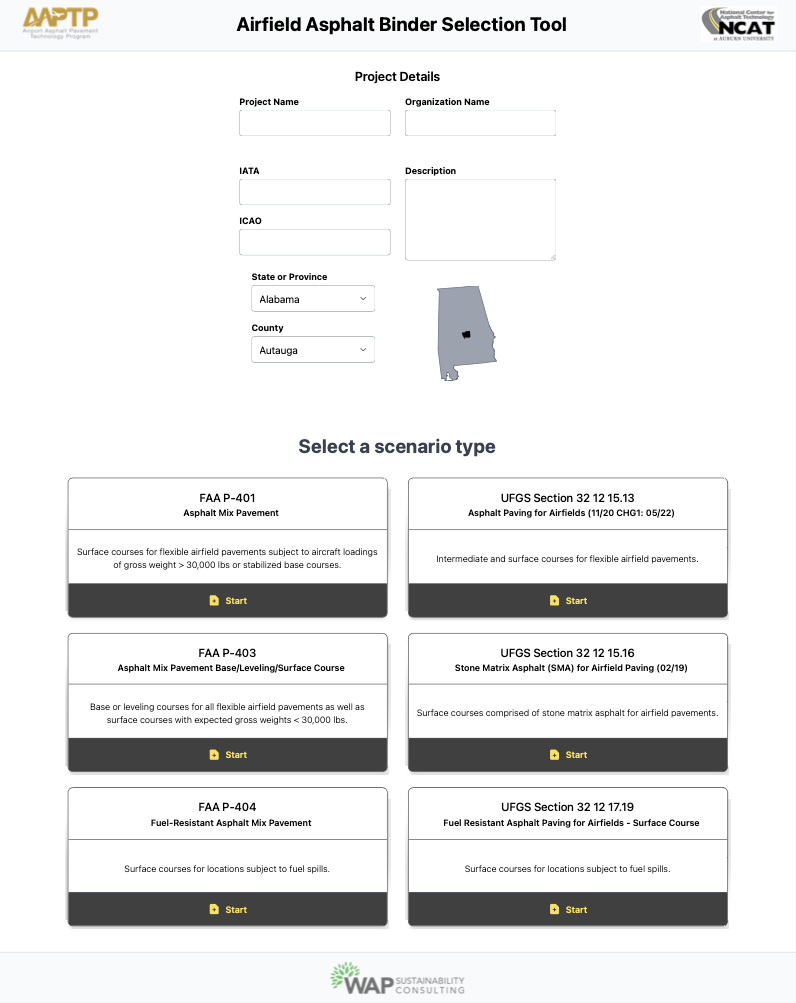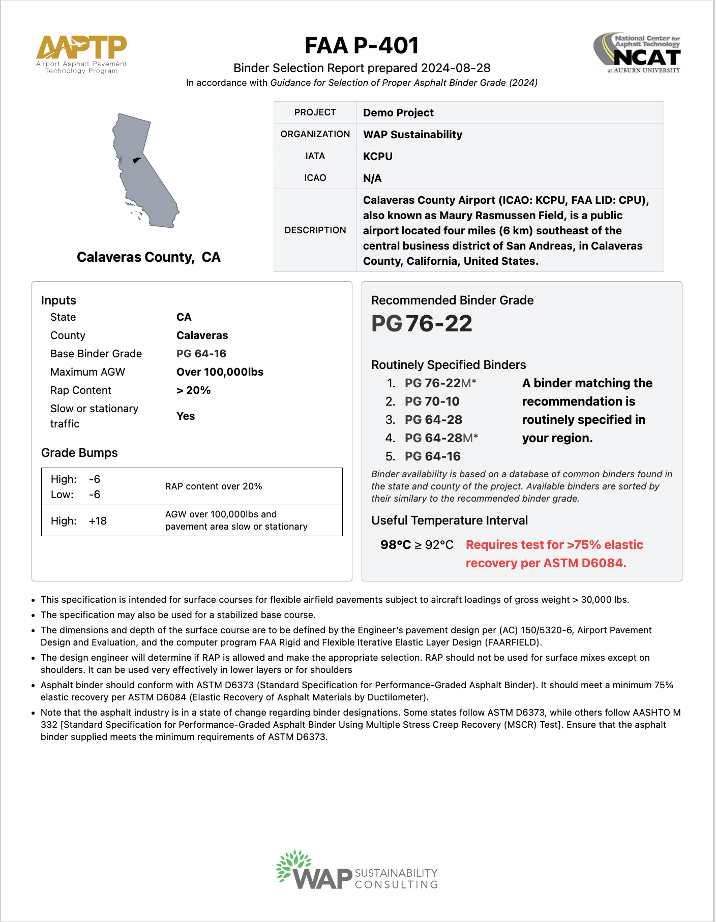- Fall 2024
Developing the Airfield Asphalt Binder Online Selection Tool

Airfield Asphalt Binder Online Selection Tool
Selecting the appropriate asphalt binder grade for airport pavements is important to the pavement's ability to withstand aircraft loads, environmental conditions, and the rigors of daily operations. However, selecting the correct binder is not a straightforward task. The Federal Aviation Administration’s (FAA) Advisory Circular “Standards for Specifying Construction of Airports” No. 150/5370-10H and the Unified Facilities Guide Specifications (UFGS) used for the Department of Defense (DOD) airfield projects contain specifications related to the required materials and methods used for construction on airport pavements. While providing comprehensive guidelines, these specifications leave the final selection of the asphalt binder at the discretion of the design engineer. This selection process can be challenging, particularly for those with limited experience in asphalt technology, leading to potential performance and cost issues if the wrong asphalt binder grade is chosen.
One of the main challenges in the asphalt binder selection is balancing performance and cost. The engineer must choose a binder that meets the specific performance needs of the project without adding unnecessary costs. For example, specifying a more expensive asphalt binder than necessary can significantly increase the overall project cost without providing additional benefits in pavement performance. Another challenge is the availability of certain asphalt binders. Not all binder grades are readily available in every region, and selecting a binder that is not routinely specified can lead to delays and increased costs as materials must be sourced from different locations.
To address these challenges, the Airport Asphalt Pavement Technology Program (AAPTP), as part of a cooperative agreement with the National Asphalt Pavement Association (NAPA) and the FAA, sponsored a study to develop an airfield asphalt binder selection tool (Figure 1). This online tool is designed to assist engineers in choosing the correct asphalt binder for their project based on various factors, including climate, aircraft loading, and pavement layer. The tool uses an asphalt binder availability database, providing state- and county-level information to ensure that the selected binder is appropriate for the project's needs and routinely specified within the project region.

Figure 1. (b) Available scenario types.
The tool first determines a base asphalt binder grade based on environmental conditions (climate), which is typically selected based on standard grades used in the project's location (Figure 2). From there, the tool applies a series of scenario-specific adjustments, considering factors such as aircraft gross weight, speed of the aircraft ground movements, pavement layer (FAA projects), aircraft tire pressure (DOD projects), and whether the layer allows recycled asphalt pavement (RAP) materials. The result is a recommended binder grade that meets the performance requirements and is locally available. If an asphalt binder grade not routinely specified is recommended for a project, the tool will guide the design engineer on how to get it.

Figure 2. Selection of base binder grade.
The key benefit of this tool is preventing incorrectly specified binder grades. It helps engineers choose the right binder grade, avoiding extra costs and delays from sourcing out-of-region materials, and advises on the need for additional testing or binder modification.
The Airfield Asphalt Binder Selection Tool, developed by NCAT and WAP Sustainability Consulting, is designed to be user-friendly, with no login required and a simple, intuitive interface.
Engineers can access the tool online at airfieldasphaltbinder.org, input their project details, and receive a printable report that includes the recommended binder grade, any necessary grade adjustments, and additional testing requirements.
In the broader context of airfield pavement design, this tool exemplifies how technology can be leveraged to improve decision-making processes, leading to better outcomes in terms of both As airports face growing demands from heavier aircraft and intense traffic, selecting the right materials becomes increasingly crucial, making the tool a valuable resource for designing flexible pavements.

Contact Raquel Moraes at moraes@auburn.edu for more information about this research.